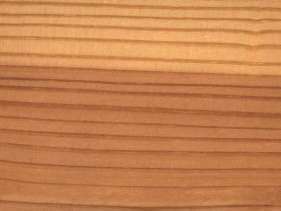
Pitch pine (Pinus rigida)
Family: Betulaceae
Common names: Pine, Pitch pine
Distributed in: Canada, United States (North America)
Distribution overview: This North America species is distributed in Ontario, Quebec, Connecticut, Delaware, Georgia, Kentucky, Massachusetts, Maryland, Maine, Minnesota, North Carolina, Great Smoky Mountain National Park, Illinois, New Hampshire, New Jersey, New York, Ohio, Pennsylvania, Rhode Island, South Carolina, Tennessee, Virginia, Vermont, and West Virginia. It forms pure stands initially which are gradually replaced by hardwoods, and is also found in mixed forests. The tree prefers shallow sands and gravels on steep slopes and ridges, as well as in river valleys and swamps. Pitch pine grow from sea level to an elevation of slightly over 3000 feet (900 m), occasionally higher.
Common uses: Core Stock, Crossties, Decorative veneer, Fiberboard, Figured veneer, Hardboards, Mine timbers, Particleboard, Pile-driver cushions, Piling, Plain veneer, Plywood, Poles, Pulp/Paper products, Pulpwood, Railroad ties, Structural plywood, Utility crossarms, Utility plywood, Utility poles, Veneer
Environment profile: Widespread, abundant, and secure in most areas within its range
Tree size: Trunk diameter is 100-150 cm
Colors: the heart isRed, Various shades of yellow and orange to reddish brown or light brown and the sapwoodWhite, Yellow.The grain isGenerally straight, but may be somewhat uneven , the textureMediumand the lusterMedium
Natural durability: Susceptible to insect attack, Very little natural resistance to decay in ground contact
Odor: Strong resinous odor
Kiln Drying Rate: Naturally dries slowly
Ease of Drying: Slowly
Comments: Abnormal wood tissue in the form of compression wood may be present
Blunting Effect: Moderate blunting effect on cutting edges
Cutting Resistance: Resin exudation may gum up sawteeth
Gluing: Easy to glue
Nailing: Good nail holding properties , Pre-Boring Recommended
Planing: Responds fairly well to most ordinary machine tools, with moderate blunting effect
Resistance to Impregnation: Difficult to treat with presevatives
Response to hand tools: Fairly Difficult to Difficult to Work
Sanding: Good sanding properties
Steam bending: Unsuitable for steam bending applications because of high resin content
Screwing: Good screw holding properties, Pre-boring recommended;
Painting: Satisfactory painting properties
; Polishing: Very Good to Excellent; Staining: Responds fairly well to most finishing treatmens
; Varnishing: Takes varnishes satisfactorily
;
- Numerical data Metric
- Numerical data English
- Strength properties
- References
 |
 |
 |
 |
| Item |
Green |
Dry |
Metric |
| Specific Gravity |
0,44 |
0,48 |
|
| Density |
|
|
kg/m3 |
| Bending Strength |
468 |
744 |
kg/cm2 |
| Crushing Strength |
24 |
56 |
kg/cm2 |
| Hardness |
|
|
kg |
| Impact Strength |
|
|
cm |
| Shearing Strength |
|
93 |
kg/cm2 |
| Stiffness |
82 |
98 |
1000 kg/cm2 |
| Tangential Shrinkage |
7 |
|
% |
| Radial Shrinkage |
4 |
|
% |
| Weight |
|
|
kg/m3 |
| Maximum Load |
0,63 |
0,63 |
cm-kg/cm3 |
| Toughness |
|
|
cm-kg |
| Static Bending |
|
|
kg/cm2 |
|
 |  |  |  | | Item | Green | Dry | English | | Bending Strength | 6664 | 10584 | psi | | Crushing Strength | 353 | 804 | psi | | Maximum Crushing Strength | 2891 | 5821 | psi | | Shearing Strength | | 1333 | psi | | Stiffness | 1176 | 1401 | 1000 psi | | Work to Maximum Load | 9 | 9 | inch-lbs/in3 | | Specific Gravity | 0.44 | 0.48 | | | Radial Shrinkage | 4 | | % | | Tangential Shrinkage | 7 | | % | | Volumetric Shrinkage | 11 | | % | |
Compression strength (parallel to grain) = medium
Bending strength (MOR) = medium
Boone, R.S., C.J. Kozlik, P.J. Bois and E.M. Wengert. 1988. Dry Kiln Schedules for Commercial Woods: Temperate and Tropical. United States Department of Agriculture, Forest Service, Forest Products Laboratory, General Technical Report FPL-GTR-57, Madison, Wisconsin.Little, E.L.1980.The Audubon Society Field Guide to North American Trees - Eastern Region.Published by Arthur A. Knopf, New York.Mirov, N.T. 1967. The Genus PINUS. The Ronald Press Company, New York. LCC Card No. 67-14783.Panshin, A.J. and C. deZeeuw. 1980. Textbook of Wood Technology, 4th Edition. McGraw-Hill Series in Forest Resources. McGraw-Hill Book Company, New York.USDA. 1987. Wood Handbook - Wood as an Engineering Material, Forest Service, Agriculture Handbook No. 72, Forest Products Laboratory, Madison, Wisconsin.USDA. 1988. Dry Kiln Operators Manual, Preliminary Copy. Forest Service, Forest Products Laboratory, Madison, Wisconsin.
|








